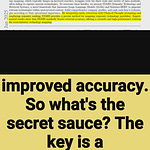A new way to detect if RAG systems have enough context to answer questions accurately
Teaching AI when to shut up instead of making things up
This paper introduces a framework to analyze why Retrieval Augmented Generation (RAG) systems make errors - whether due to LLMs failing to use context or the context itself being insufficient. The research develops a new method to classify context sufficiency and explores ways to reduce hallucinations in RAG systems.
-----
https://arxiv.org/abs/2411.06037
## Original Problem 🤔:
RAG systems often generate incorrect answers even with retrieved context, but we don't know if errors happen because LLMs fail to use context properly or because the context itself lacks sufficient information.
-----
## Solution in this Paper 🔧:
→ Introduces a "sufficient context" classifier that determines if retrieved information contains enough details to answer a query
→ Develops an autorater using Gemini 1.5 Pro that achieves 93% accuracy in classifying context sufficiency
→ Creates a selective generation framework that uses context sufficiency signals to guide when models should generate answers versus abstain
→ Implements intervention strategies combining both confidence and sufficient context signals
-----
## Key Insights 🎯:
→ Proprietary LLMs excel at using sufficient context but often output wrong answers instead of abstaining when context is insufficient
→ Open-source LLMs tend to hallucinate or abstain even with sufficient context
→ Models can generate correct answers 35-62% of the time even with insufficient context
→ Standard datasets have many instances (44-56%) with insufficient context
-----
## Results 📊:
→ Selective generation method improves accuracy by 2-10% for Gemini, GPT, and Gemma
→ Gemini 1.5 Pro achieves 93% accuracy in classifying sufficient context
→ FLAMe autorater achieves 89.2% F1 score as a computationally efficient alternative










